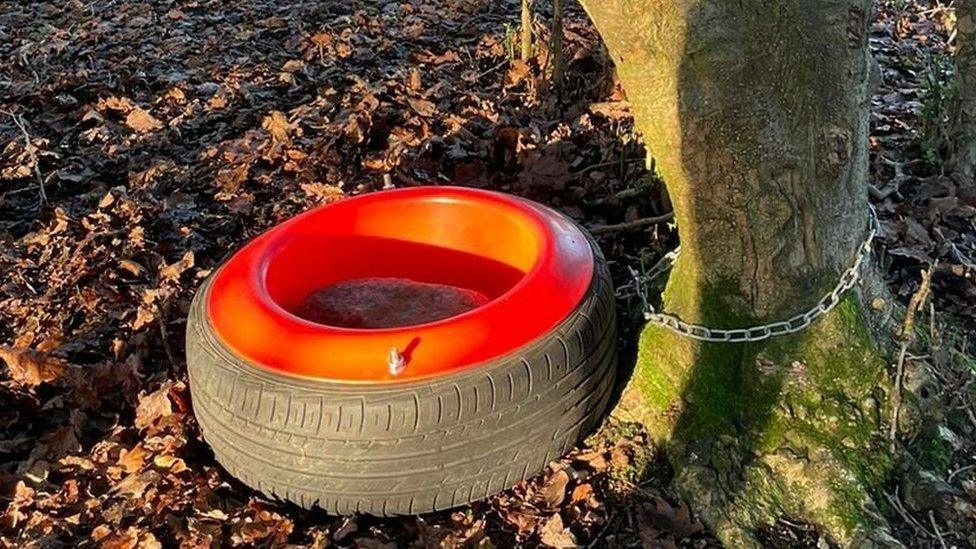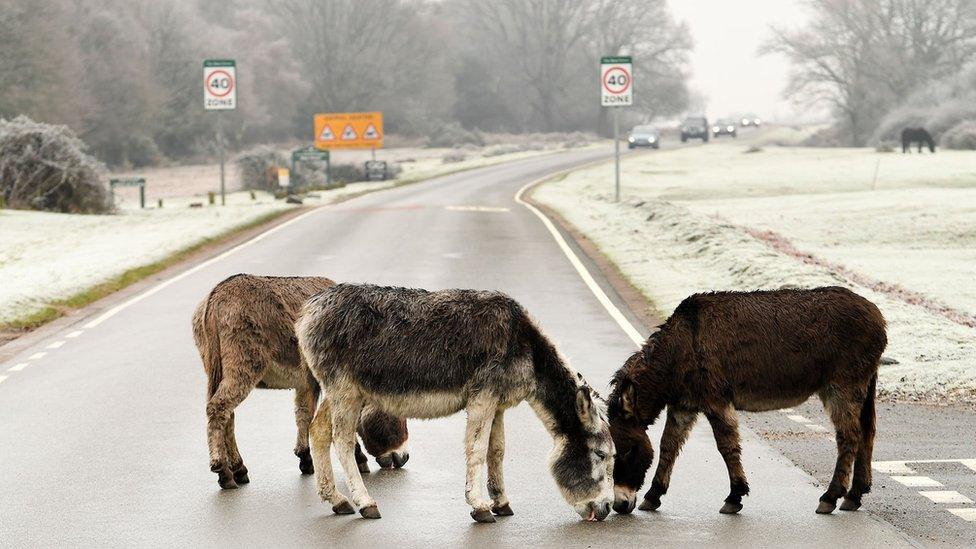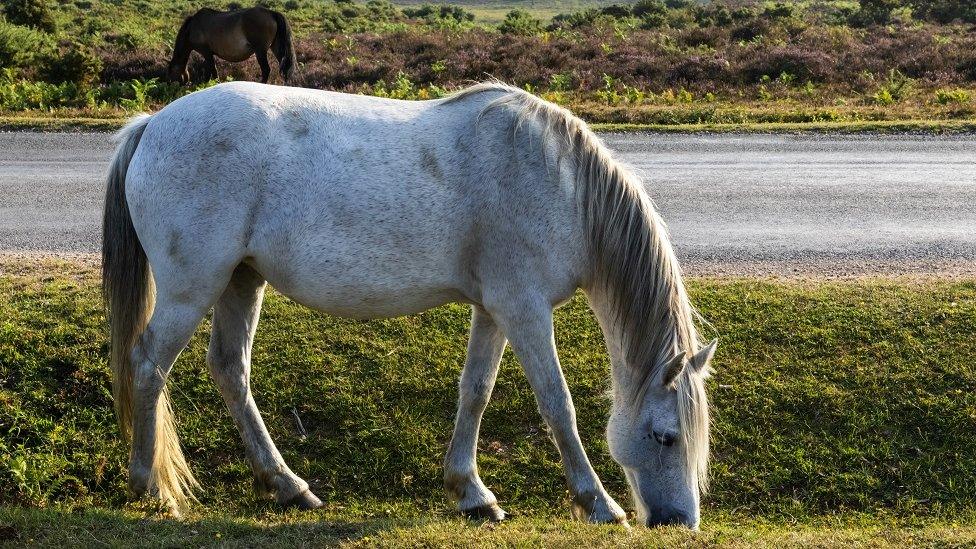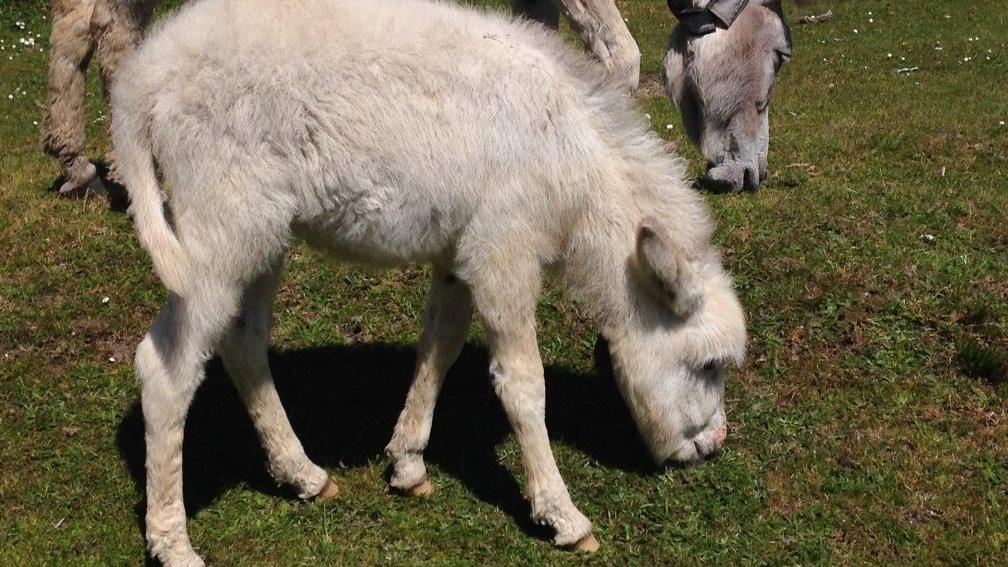New Forest animal road deaths: Salt scheme trialled
- Published

The salt licks are placed in containers away from the roadside
A trial scheme has begun to lure livestock away from gritted roads in a bid to cut animal deaths in the New Forest.
Ponies, cattle and donkeys are attracted to treated roads in winter as they like to lick the salt, making them a hazard to drivers.
So-called salt licks have been placed near the B3078 Roger Penny Way - a blackspot for accidents.
The forest's commoners said they hoped they would "make a difference".
The new salt licks - large lumps of salt - have been placed about 135m (440ft) back from the road in open-top containers.

Animals are attracted to roads in the New Forest in winter as they lick salt off the surface
Once the weather improves, the containers will be removed.
Fifty animals were killed on roads in the national park in 2020, with most deaths occurring in winter months.
Chemical alternatives to rock salt have been ruled out in the past as run-off would affect environmentally-sensitive areas along the roadsides.
The salt lick scheme was initiated by the Commoners Defence Association - which represents commoners who have historical rights to graze animals on the open forest.
Member Bill Howells said: "I would like to thank all the relevant organisations who have given us consent to trial the salt licks, hopefully it will make a difference to animal behaviour and accident numbers."
The association warned that animals have the right of way in the forest and drivers still needed to be aware of the dangers of them wandering on to roads.
There have also been calls for average speed cameras to be installed in the New Forest in a bid to cut the number of livestock killed.

Follow BBC South on Facebook, external, Twitter, external, or Instagram, external. Send your story ideas to south.newsonline@bbc.co.uk, external.
Related topics
- Published11 December 2021

- Published13 September 2021

- Published13 December 2020

- Published5 December 2014
